Disclaimer: This blog post contains affiliate links. If you make a purchase through these links, I may earn a small commission at no additional cost to you. Learn More. Thank you for supporting our garden community.
20 Fast Growing Vegetables to Harvest in Under 60 Days!
If you’re eager to enjoy fresh, homegrown vegetables in early spring, then fast-growing vegetables are your best option. Whether you’re a beginner or seasoned gardener, planting these quick-maturing crops can bring almost instant gratification. In this post, we’ll explore the best fast-growing vegetables, how to grow them, and tips for a successful harvest.
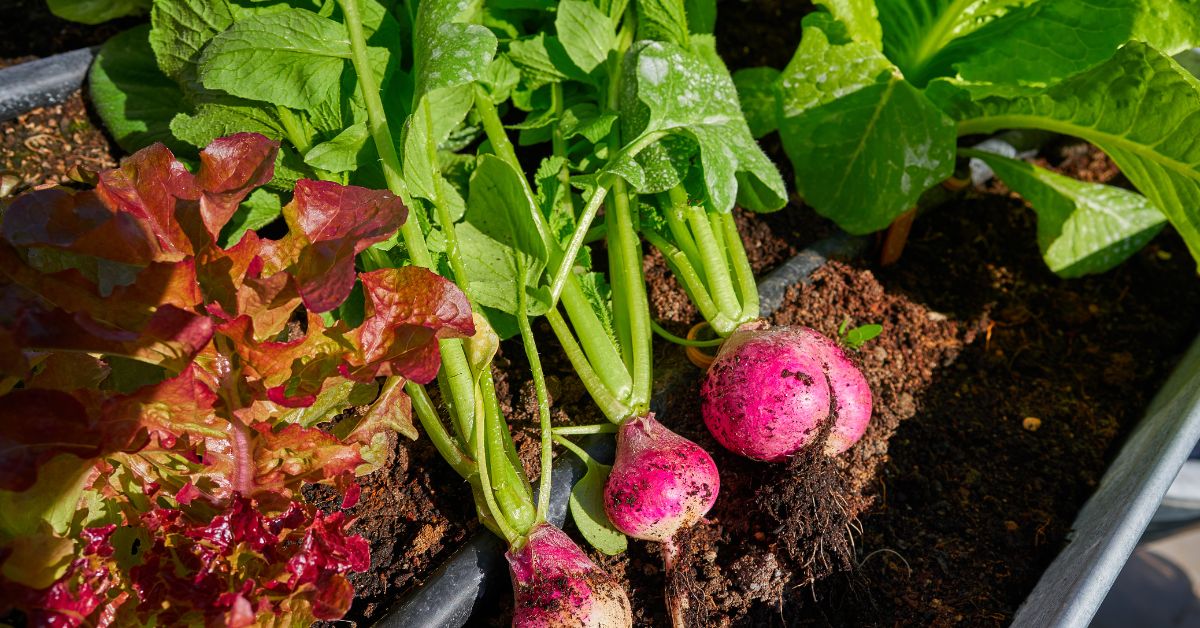
Fast Growing Vegetables to Plant in Spring
Part of the reason why gardening is so enjoyable for us is that we can witness the growth of our plants. But ultimately, it does take time. And some crops take so freakin long to mature, sometimes over 100 days!
Instead, try planting some fast-growing vegetables, which reach maturity in 60 days or less. And you can grow them in-ground, in raised beds, or in containers.
Luckily, I’ve prepared my top 20 favourite fast-growing vegetables in this list.
So let’s get right into it!
Products
To buy high-quality garden seeds, check out Burpee.
For a wide selection of perennial garden plants, check out Nature Hills Nursery.
For gardening equipment, check out Bootstrap Farmer.
Days to Maturity
This is the most important information when deciding which vegetables to grow for a quick harvest. “Days to maturity” is the number of days required for a plant to fully mature.
This number can be found on the back of your seed packets, sometimes under the heading “days.”
So if it says “days: 30-45,” then you know that variety is ready to harvest in 30-45 days.
However, it can become confusing when considering from what point you start counting these days. Is it from sowing, germination, or transplant?
Generally, the time after the seed has germinated is counted in the days to maturity. So it doesn’t include the 1-2 week germination process. With the same example, 30-45 days to maturity would also include the 1-2 weeks germination process.
So in reality, it’s about 40-55 days from sowing to harvest.
Additionally, the seed packet will specify if it is “from transplanting” by saying “30-45 days from transplant.” But this is rare and only true for a few crops.
How to Plant Fast Growing Vegetables from Seed
Timing and technique matter when planting these vegetables. Here’s how to get your fast-growing vegetables off to a great start:
- Soil Prep: After a year of being completely used up, it’s time to refresh your soil in the spring. Add plenty of well-rotted compost or manure to increase drainage and beneficial microbe growth. You should also apply a balanced organic 5-5-5 fertilizer to the planting holes of each vegetable.
- Sowing: Every vegetable variety is different, so it’s important to pay attention to their specific needs. Make sure to follow the instructions for timing, depth, spacing, and lighting requirements.
- Watering: Follow general garden watering practices, ensuring the soil doesn’t dry out and does not stay completely waterlogged. However, when you are planting this early in the spring, it may not even get hot enough that you are watering every week. Every couple of weeks may be ok as well.
- Frost Dates: Always check your last frost date in the spring. This is the day where there is less than 50% chance that a frost can occur, and decreasing in chance thereafter. This is very important for determining when you will plant your vegetables. Most of these crops can be planted outside about 4 weeks before this date.
- Protection: Although most of these fast-growing vegetables are very cold-tolerant, they can still get damaged by an early spring frost. Make sure they are protected with a floating row cover or cold frame.
20 Fast Growing Vegetables to Plant in the Spring
Here is our list of 20 fast-growing vegetable varieties that are perfect to plant and grow in early spring.
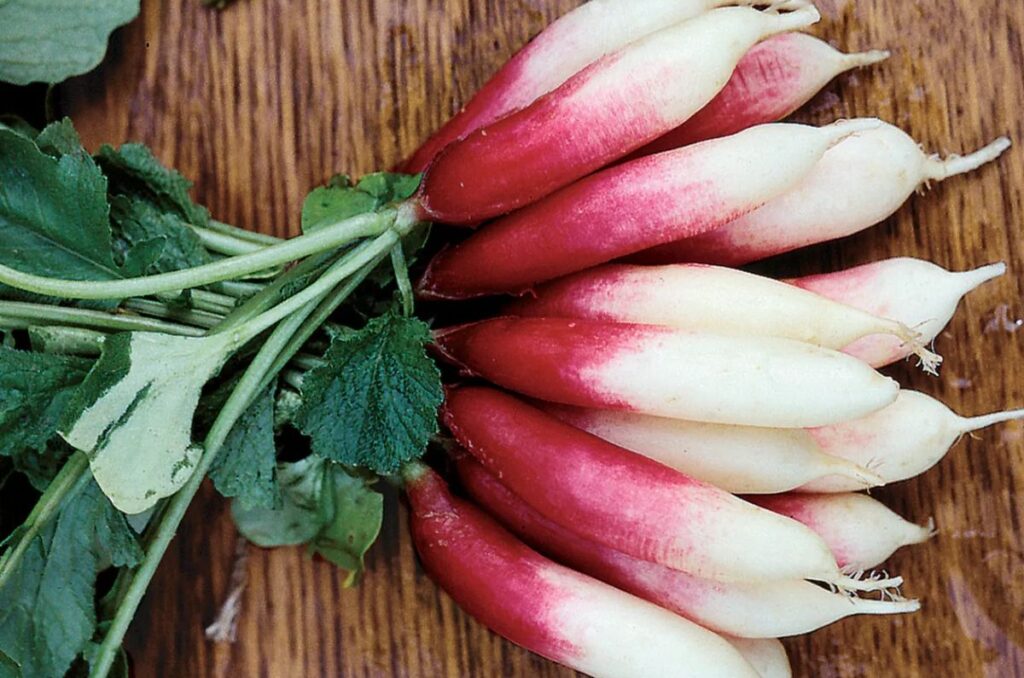
1. Radishes
Radishes are truly the sprinters of the vegetable garden, maturing incredibly quickly.
They are ideal for beginner gardeners because they are easy to grow and mature very quickly. Radishes prefer cooler weather, making early spring the perfect for planting.
Make sure to sow your seeds directly into your garden. Root crops don’t do well when started indoors. Don’t overcrowd the seedlings, as they may start to compete for root space. 1-2 inches between plants is ideal.
Harvest radishes as soon as they are ready to preserve their flavour and texture. When left to mature too long, they become bitter and woody. Not ideal!
Here are some of my favourite varieties:
- French Breakfast: 23 days to maturity.
- Cherry Belle: 22 days to maturity.
- Fire N Ice: 25 days to maturity.
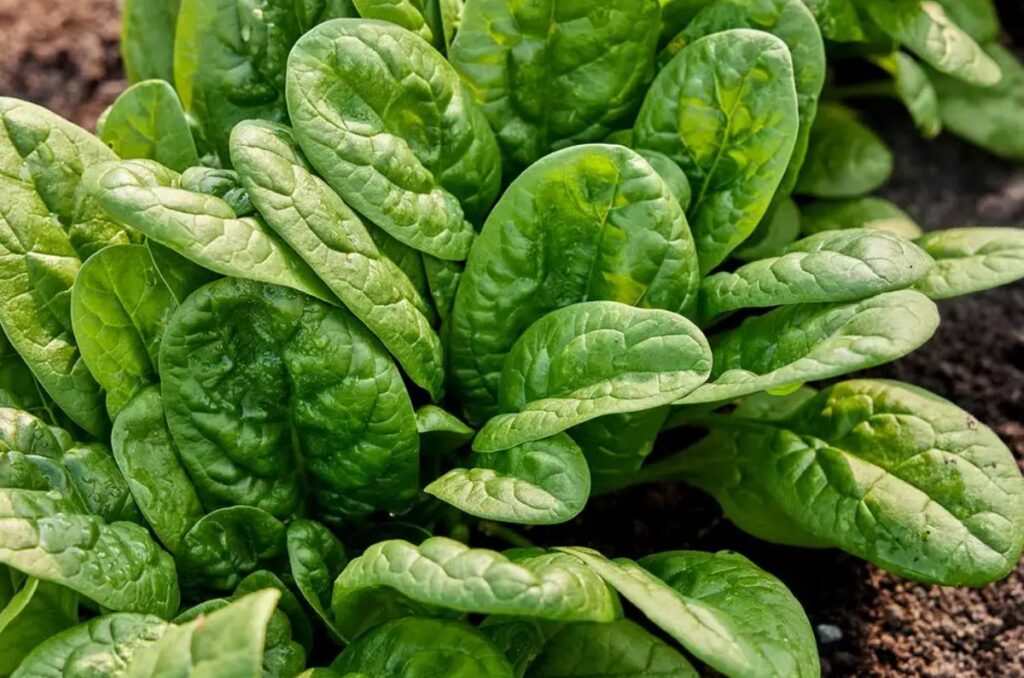
2. Spinach
Spinach is a perfect fast growing leafy vegetable that grows quickly in cool weather. It can be harvested at the baby leaf stage for salads or allowed to mature for cooking.
Spinach prefers full sunlight but does well with the cooler temperatures of early spring, which reduces the risk of bolting.
If it starts to get too hot, consider using a shade cloth to protect your plants from becoming bitter.
You can start these seeds indoors, but I usually don’t see the need to do it. They mature quickly and grow well straight in the garden.
Here are some of my favourites:
- Bloomsdale Long Standing: 40-48 days to maturity
- Space Hybrid: 35-40 days to maturity
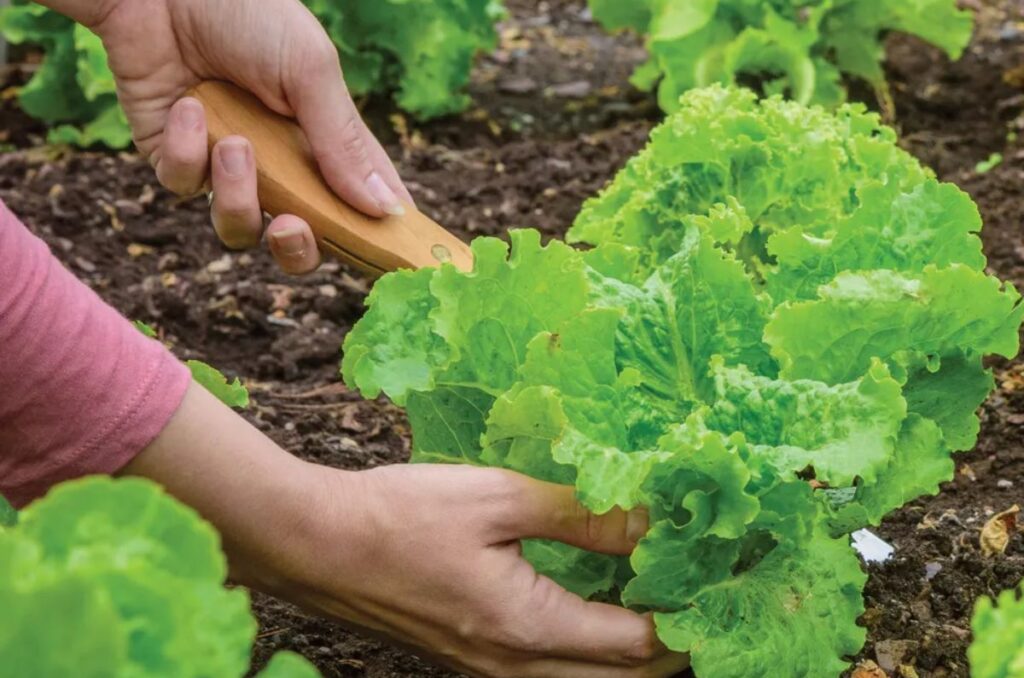
3. Lettuce
Lettuce is a garden staple and is perfect for a quick harvest. It’s adaptable to both raised beds and containers, making it suitable for all types of gardeners.
There are literally hundreds of different lettuce varieties on the market, so there surely is one for your garden.
I like to start my lettuce seeds indoors and they are pretty much ready a week after transplanting. Make sure to harvest frequently to ensure the leaves don’t become bitter
Here are some of my favourite lettuces:
- Green Ice: 45 days to maturity
- Black-Seeded Simpson: 45 days to maturity
- Salad Bowl: 45 days to maturity
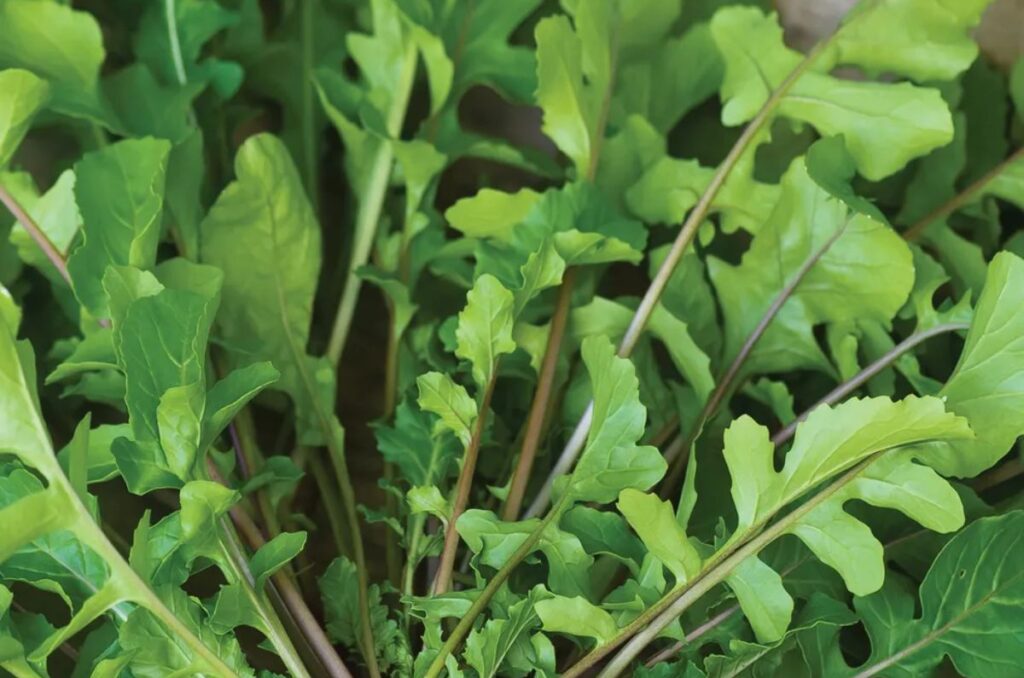
4. Arugula
Arugula, known for its peppery flavour, is another fast grower.
Like other leafy greens, arugula enjoys the mild early spring climate, which helps produce a more vibrant taste.
Direct-sow arugula seeds in your garden as soon as the soil is workable. Succession sow your arugula so that you have a consistent supply throughout the growing season.
Make sure to harvest young leaves so that the plants continue to produce.
Here are some of my favourite varieties:
- Selvatica Organic: 30-35 days to maturity
- Garden Tangy: 30-35 days to maturity
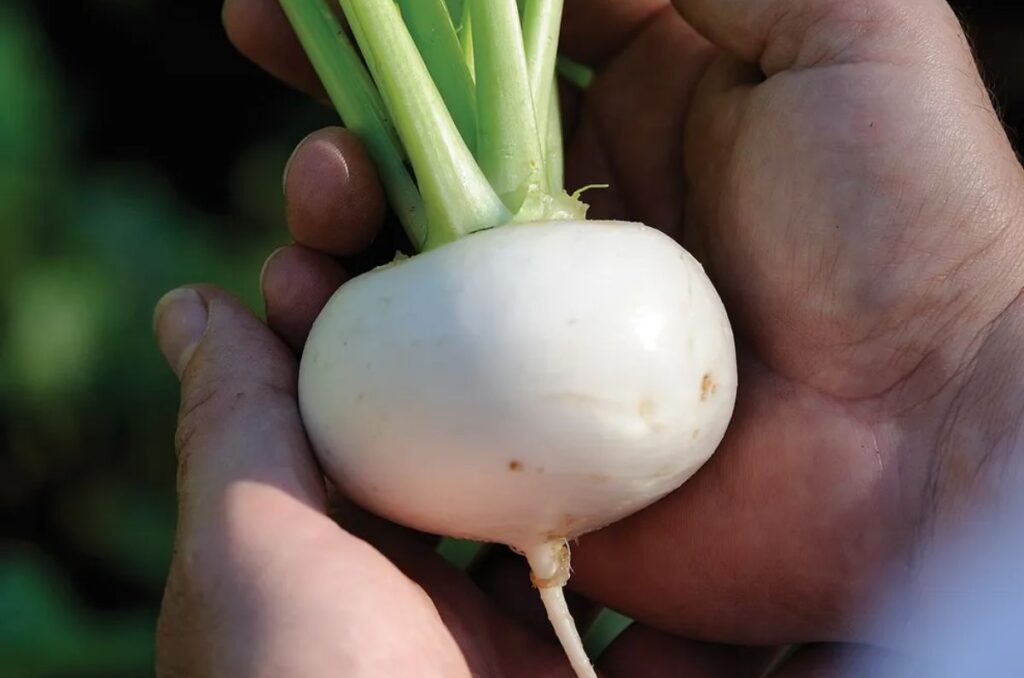
5. Turnips
Turnips are a versatile vegetable that can be grown for both their flavourful roots and nutritious greens.
Planting turnips in early spring gives them a chance to develop sweet roots before the heat of the summer sets in. That being said, make sure to harvest them before they turn bitter and woody.
I have tried starting turnip seeds indoors and it does work. But considering that it’s a root crop, you should probably just direct-sow it into the garden.
Here are some of my favourite turnip varieties:
- Purple Top White Globe: 55 days to maturity
- Oasis Hybrid: 50-55 days to maturity
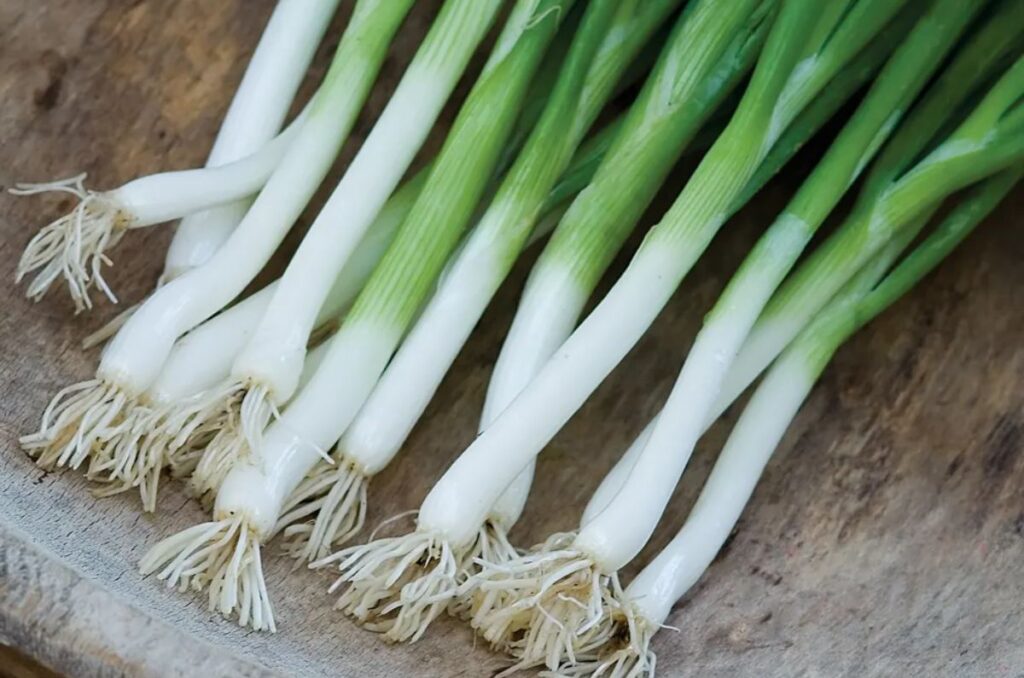
6. Green Onions
Green onions, also known as bunching onions or scallions, grow quickly and don’t require much space, making them perfect for small gardens or pots.
They don’t take nearly as long to mature as actual onions, making them perfect for early spring planting.
They add a subtle onion flavour to a variety of dishes and can be harvested in just a few weeks.
Here are some of my favourites:
- Parade: 60 days to maturity
- White Lisbon: 60 days to maturity
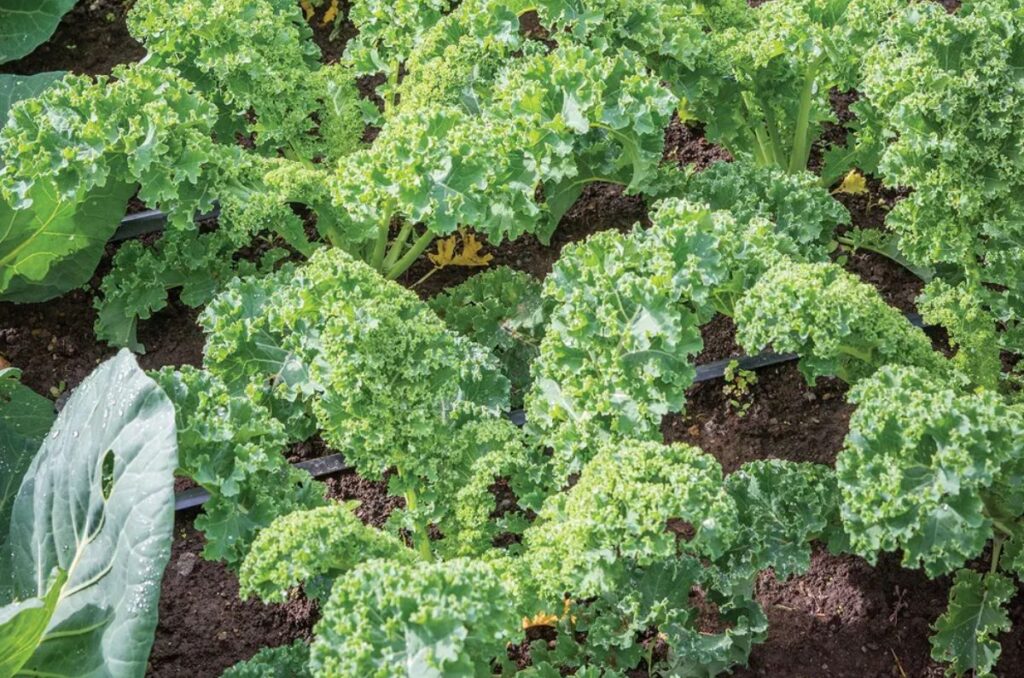
7. Kale
Kale is a very hardy crop that can tolerate cold temperatures, making it an ideal vegetable for early planting. Its leaves tend to become sweeter after a frost, so a spring sowing will give you a tasty harvest through the season.
Kale is a heavy feeder, meaning it requires lots of organic matter and nutrients to grow properly. So make sure to add plenty of compost and organic fertilizer to the planting hole.
It’s also important to start kale seeds indoors because the young plants can be targeted by certain pests. So starting indoors avoids this.
Here are some of my favourite varieties:
- Prizm Hybrid: 50-60 days to maturity
- Red Russian: 60 days to maturity
- Dwarf Blue Curled Vates: 55 days to maturity
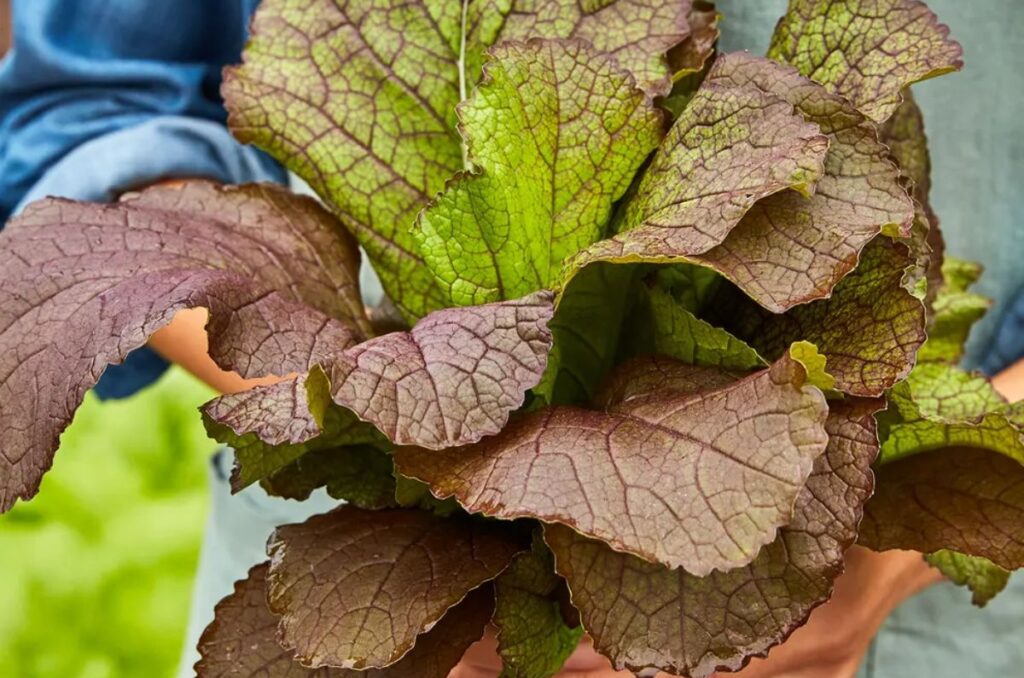
8. Mustard Greens
Mustard greens grow quickly and add a spicy kick to both raw and cooked dishes.
Planting in early spring takes advantage of cooler weather, which encourages mustard to grow to be large and tasty.
Make sure to provide plenty of organic matter, as these plants use up a lot of nutrients. The soil should also be kept moist, especially as it starts to get warmer in late spring.
Here are some of my favourite mustards:
- Red Giant: 40-45 days to maturity
- Florida Broad Leaf: 45 days to maturity
- Tendergreen: 35-40 days to maturity
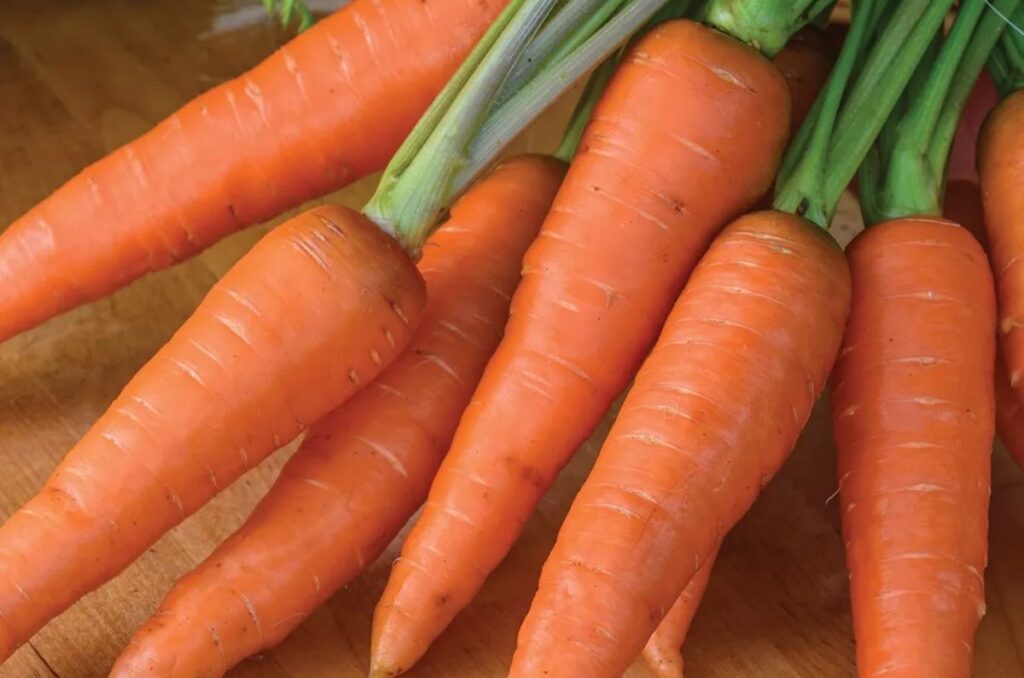
9. Carrots
Carrots planted in early spring can yield tender, sweet roots.
They require well-drained soil and can take a bit longer to mature than other vegetables on this list, but the cooler weather reduces their risk of becoming woody.
They should be direct-sown in the garden. Make sure to thin out the seedlings after they germinate to leave one plant every 2-3 inches.
Don’t skip the well-draining soil!
Here are some of my favourite fast-growing carrot varieties:
- Yaya Organic: 55-60 days to maturity
- Caracas Hybrid: 57 days to maturity
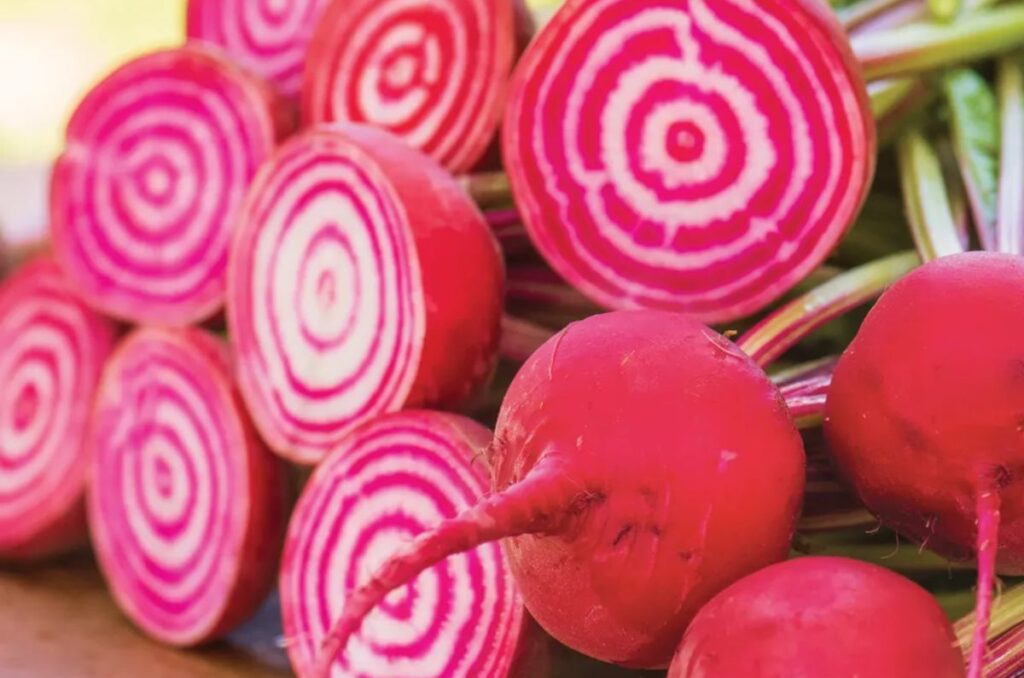
10. Beets
Beets are actually more than just the taproots; the leaves are also edible!
They prefer cooler soil temperatures, and a spring planting can result in sweet, tender beets that are perfect for roasting or salads.
Beets can be started indoors or direct-sown in your garden. I tend to start them indoors more often, as this gives them the head start they need.
A popular method for growing beets is multi-sowing, where you grow 2-4 beet plants in the same hole. I haven’t done it with much success, but you can try.
Here are some of my favourites:
- Chioggia: 54 days to maturity
- Burpee’s Golden: 55 days to maturity
- Cylindra: 60 days to maturity
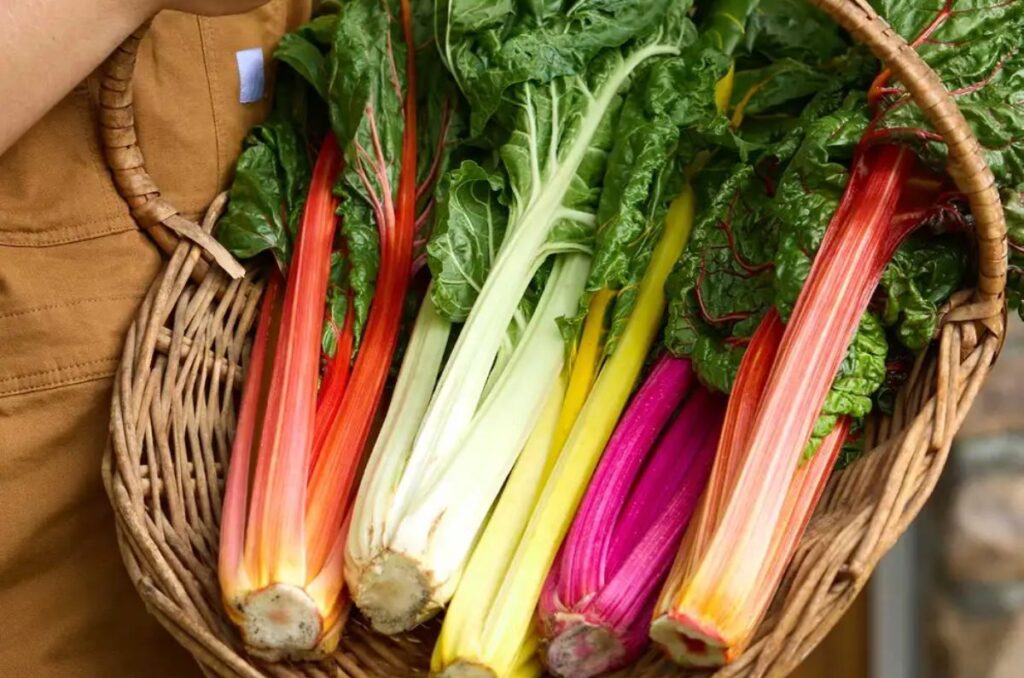
11. Swiss Chard
Swiss chard is not only delicious but also visually stunning, with brightly coloured stems.
It grows well in cooler temperatures and can be harvested continuously. Planting in spring will ensure a steady crop into summer.
Make sure you keep harvesting the leaves; don’t leave them growing too long or they may become bitter. When they are harvested younger, they are sweet and tender.
If it gets too hot, you can also use a shade cloth to protect your Swiss chard.
Here are some of my favourite varieties:
- Fordhook Giant: 60 days to maturity
- Rainbow Mix: 60 days to maturity
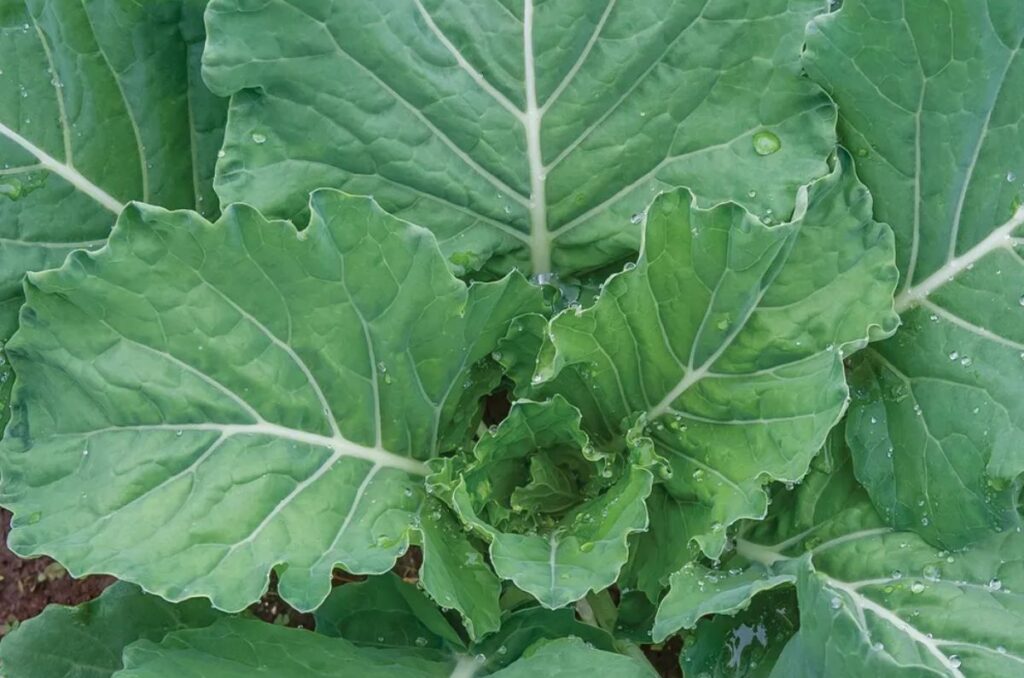
12. Collard Greens
They thrive in cooler weather, making early spring an ideal time for planting. Collards are also frost-tolerant, which helps you to extend the growing season.
Make sure to add plenty of organic matter to the soil, as well as a high-nitrogen organic fertilizer. This promotes more leaf growth.
When harvesting, remove only the outer leaves, leaving the smaller ones to continue growing.
Here are some of my favourite varieties:
- Georgia: 60 days to maturity
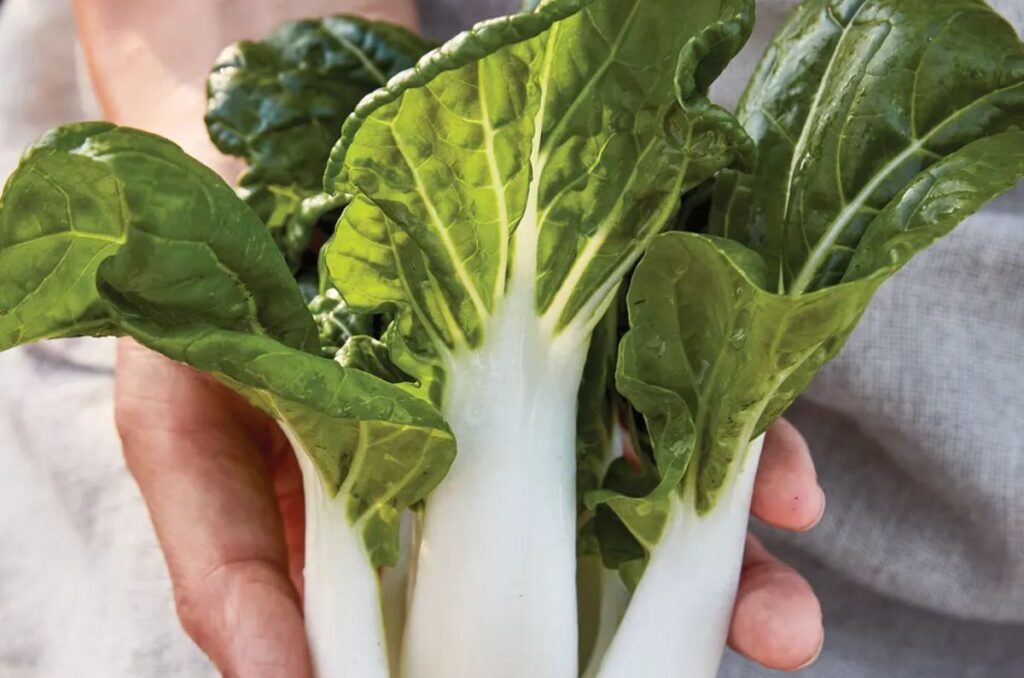
13. Bok Choy
Bok choy, with its crisp texture and sweet flavour, is perfect for stir-fries and soups.
It prefers cooler weather, which makes planting in spring ideal for avoiding bolting and encouraging tender growth.
They can be planted pretty close together, especially the dwarf varieties. However, make sure to keep the soil moist and never let it dry; this will cause your bok choy to bolt.
Here are some of my favourites:
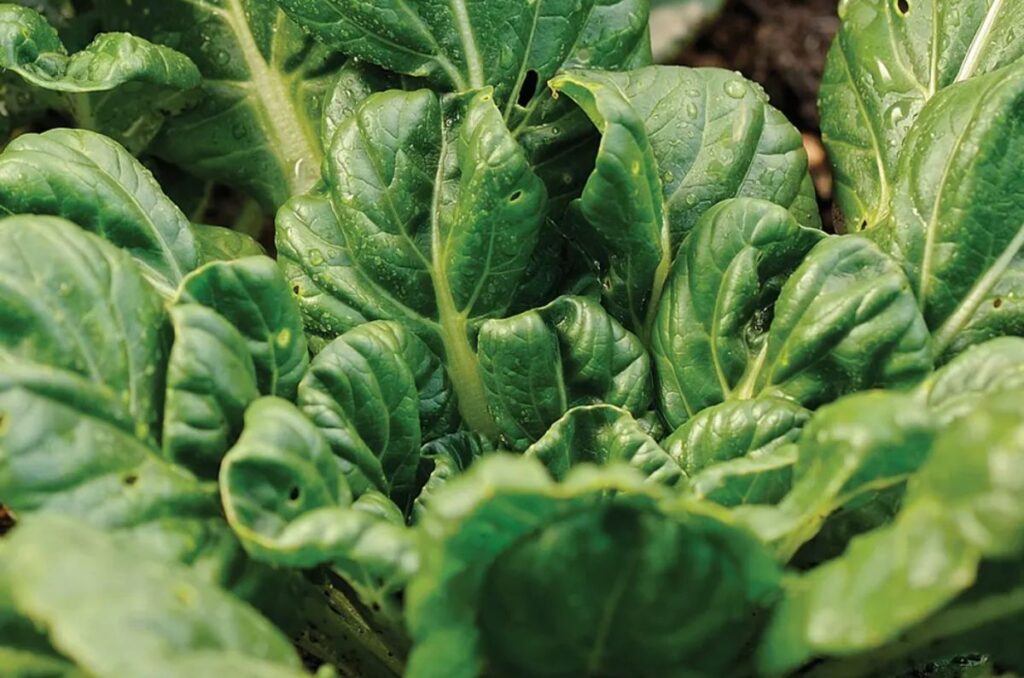
14. Asian Greens
Asian greens, including Tatsoi and Mizuna, offer a variety of flavours and textures for salads and cooked dishes.
They grow quickly and are well-suited to cooler early spring temperatures, providing abundant harvests in just a few weeks.
Sow these plants directly, as they mature quickly and can be grown very close to each other. Make sure to thin out seedlings to avoid overcrowding.
Here are some of my favourites varieties:
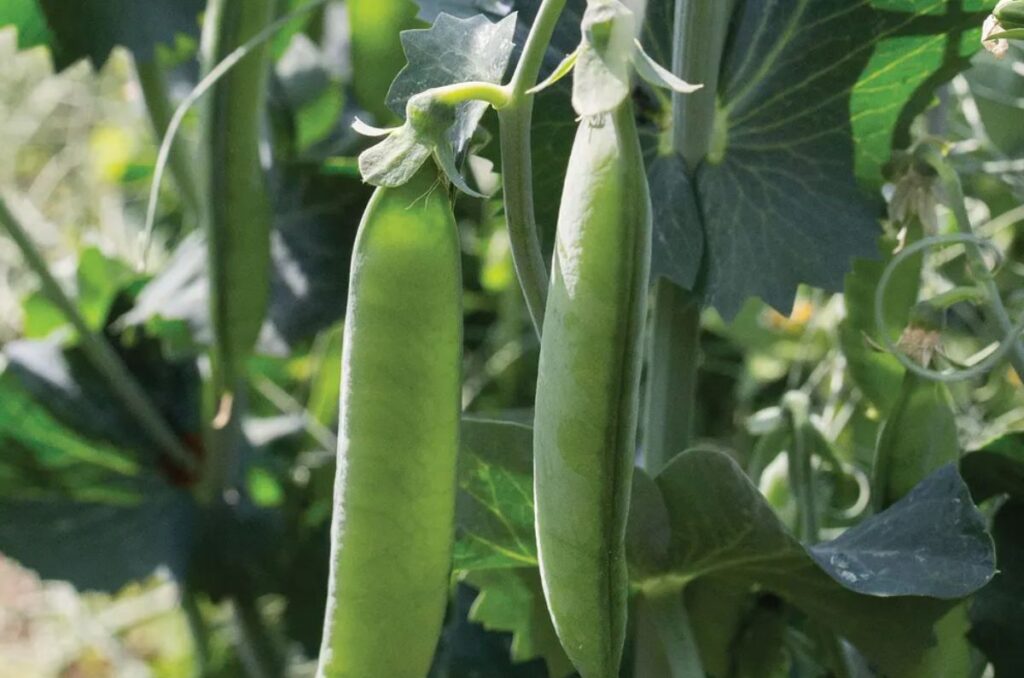
15. Peas
Peas thrive in cool weather and can be planted in early spring. They are one of the only fast growing climbing vegetables.
They require support as they grow but are otherwise easy to care for, producing sweet pods or peas that are delicious fresh from the garden.
Since peas are nitrogen-fixers, they don’t need any supplemental fertilizer. Just add compost or manure to the planting area before sowing peas.
Additionally, peas should be direct-sown in the garden and not started indoors. This is because the root system of peas is very sensitive to transplanting.
Here are some of my favourite pea varieties:
- First 13: 60 days to maturity
- Easy Peasy: 60 days to maturity
- Snowbird: 58 days to maturity
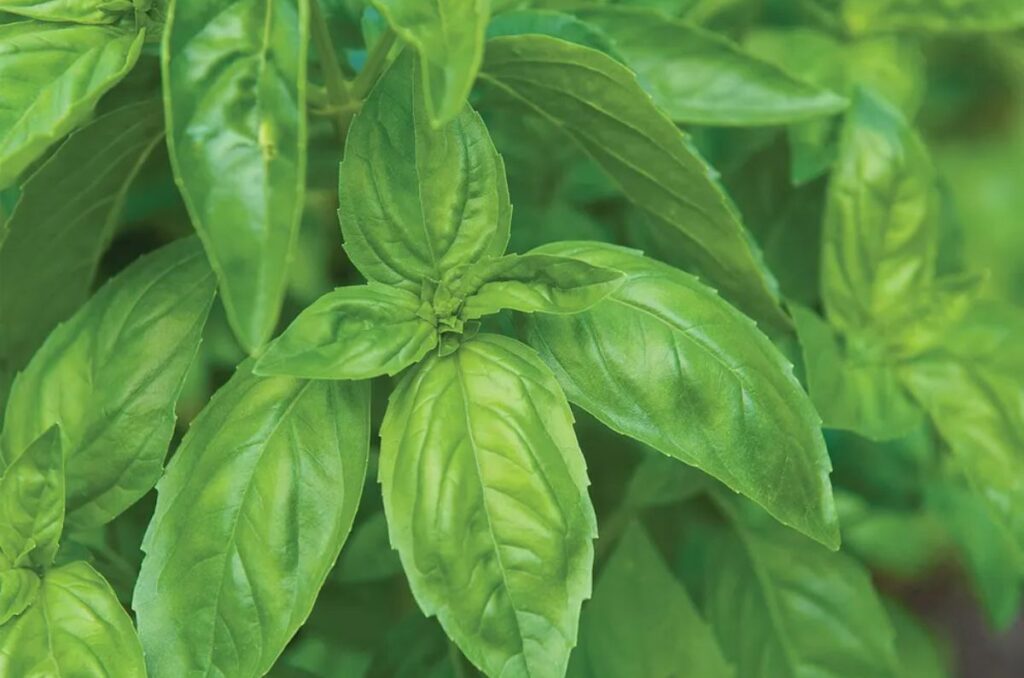
16. Basil
Basil is one of my favourites (I am Italian, so it’s unbiased) for spring planting, as it is traditionally a summer crop.
That being said, it can bolt quickly with too much heat, so spring is a perfect time to plant this fast growing herb.
Start your basil seeds indoors and transplant them into your garden. They may take a while to first start growing, but after that, they start producing like crazy!
Here are some of my favourites:
- Genovese: 60 days to maturity
- Large Leaf: 60 days to maturity
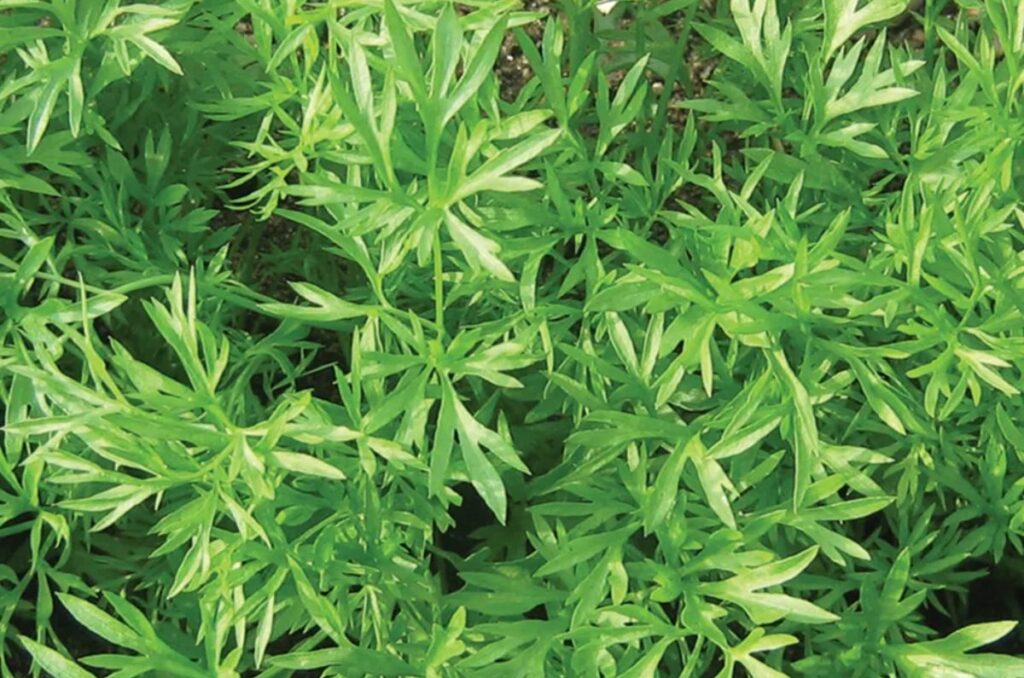
17. Cilantro
To me, cilantro tastes like soap and is pretty much not palatable at all. But there are some weirdos out there who like it.
If you’re one of them, then you know that cilantro does not like the heat; it needs to be grown in the cooler temperatures.
That makes early spring the perfect time to grow cilantro. Plant it now and get everything out of it before the real heat of the summer sets in and kills your plants.
Here are some of my favourite cilantro varieties:
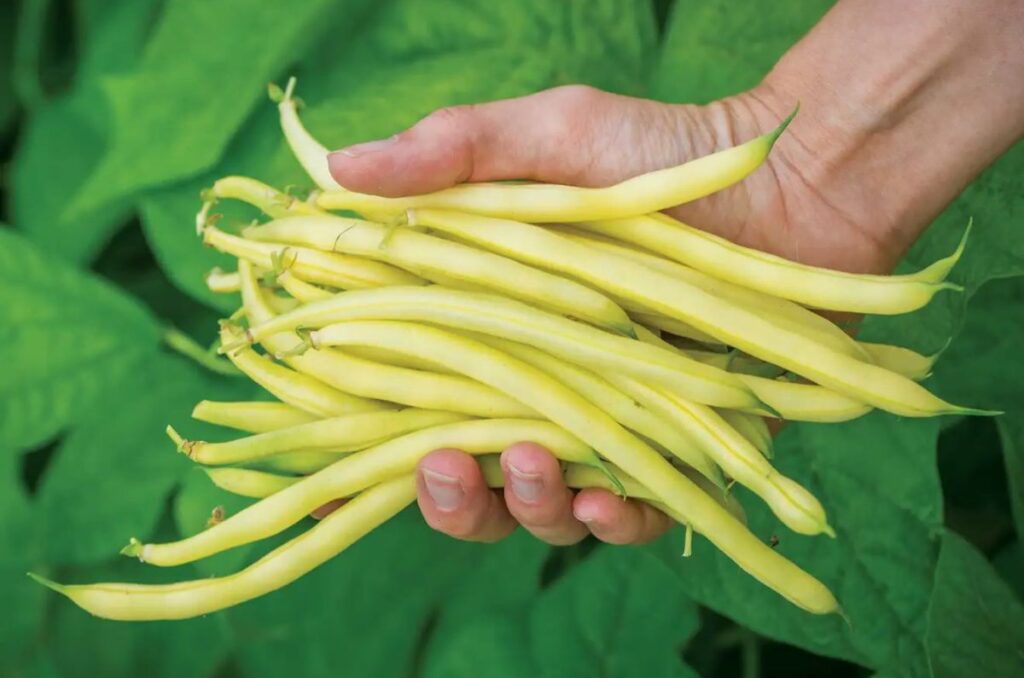
18. Bush Beans
Bush beans are short, compact, and ideal for smaller spaces or container gardeners.
A spring planting in warmer climates can produce a quick harvest before the season ends, providing fresh beans for your table.
Make sure you direct-sow these crops, as beans are very sensitive to transplanting and may be stunted if done so.
Additionally, similar to peas, beans are nitrogen-fixers, meaning they don’t need any nitrogen fertilizer added to the soil.
Here are some of my favourite varieties:
- Early Bush Italian: 50 days to maturity
- Gold Mine: 55 days to maturity
- Provider: 50-60 days to maturity
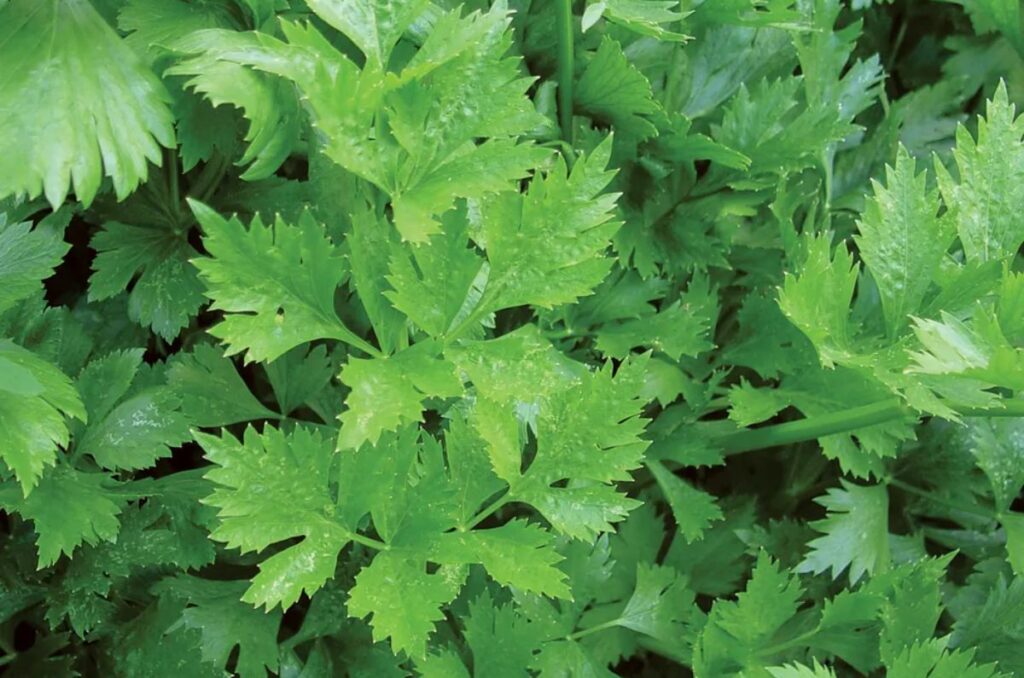
19. Parsley
Parsley is a very versatile herb that is used in many cuisines globally.
It does much better in cooler weather compared to summer temperatures, as it is less likely to bolt and run to seed.
For some reason, parsley takes really long to germinate, like 3-4 weeks. Because of this, I always start parsley seeds indoors to accommodate this germination period.
If it starts to get too hot, you may have to shade your parsley plants to prevent them from bolting.
Here are some of my favourites:
- Gigante d’Italia: 60 days to maturity
- Italian Flat Leaved: 40-60 days to maturity
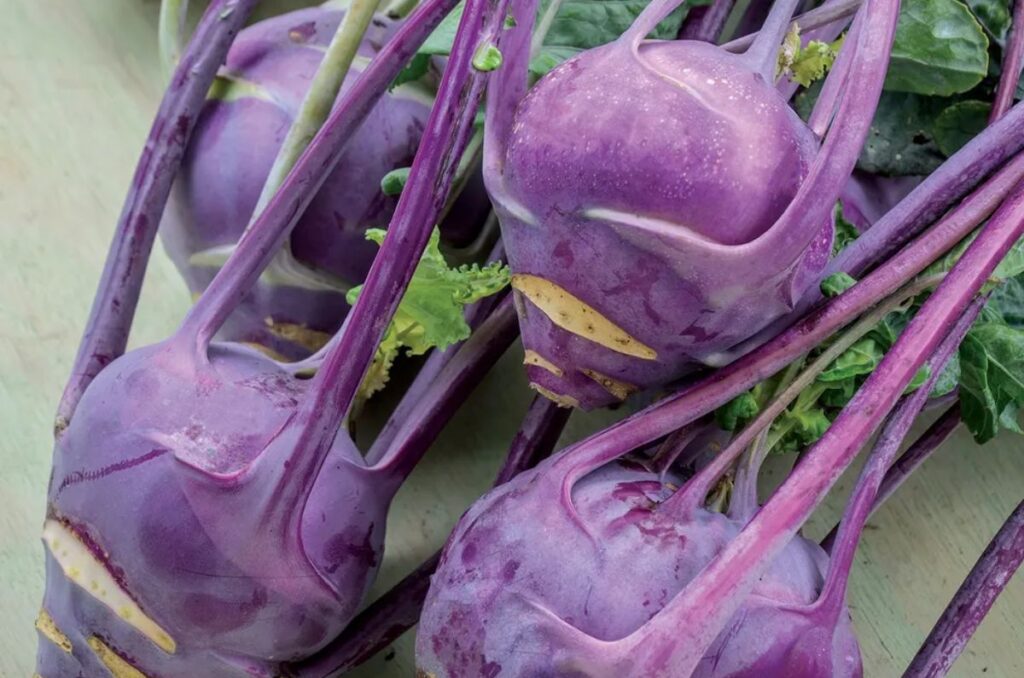
20. Kohlrabi
Kohlrabi is a lesser-known vegetable but is still worth it to grow in your garden.
It produces enlarged stem pieces that are referred to as bulbs, but they are not true bulbs.
Many of the same growing techniques as other brassicas apply to kohlrabi as well: start indoors, keep the soil moist, add plenty of organic matter to the soil, and so on.
Harvest the plant when it is still young and tender. Don’t wait for the heat to make it woody and bitter.
Here are some of my favourite varieties:
- Purple Vienna: 55-60 days to maturity
- Early White Vienna: 55 days to maturity
Frequently Asked Questions
The “days to maturity” is the best estimate for the length of time needed for a vegetable to mature. You can’t really get it earlier than that. However, you can give your plants the optimal conditions to grow as fast as possible, such as using a cold frame or floating row cover.
Some of the crops listed, such as peas and radishes, should be started from seed. However, for the other crops, like lettuce and kale, you can buy transplants from the nursery to save you some time.
All of these fast-growing vegetables can be planted in early spring, late summer, or early fall. However, checking your local growing zone for the best planting times is essential.
Most of these vegetables prefer to grow in full sun (6-8 hours of direct sunlight per day). However, some leafy greens, like spinach and lettuce, will tolerate partial shade.
Lettuce, kale, spinach, mustard, Asian greens, and root crops can tolerate hard frosts. This makes them perfect for planting in early spring or late fall.
Even More Gardening Ideas
Here are a few more posts to help your garden ideas take root:
- How to Grow Tomatoes that are Juicy and Delicious
- How to Grow Onions Perfectly Every Time
- 9 Practical Uses for Sawdust in the Garden
If you liked this article, make sure to share it with your friends and family members who are also looking to grow a productive vegetable garden. Also, consider signing up for our email newsletter; don’t worry, we won’t send you spam, just fresh gardening ideas every week!
If you want to learn more about vegetable gardening, check out The Real Gardener on LinkedIn, YouTube, and Pinterest.
Pin this post for later:
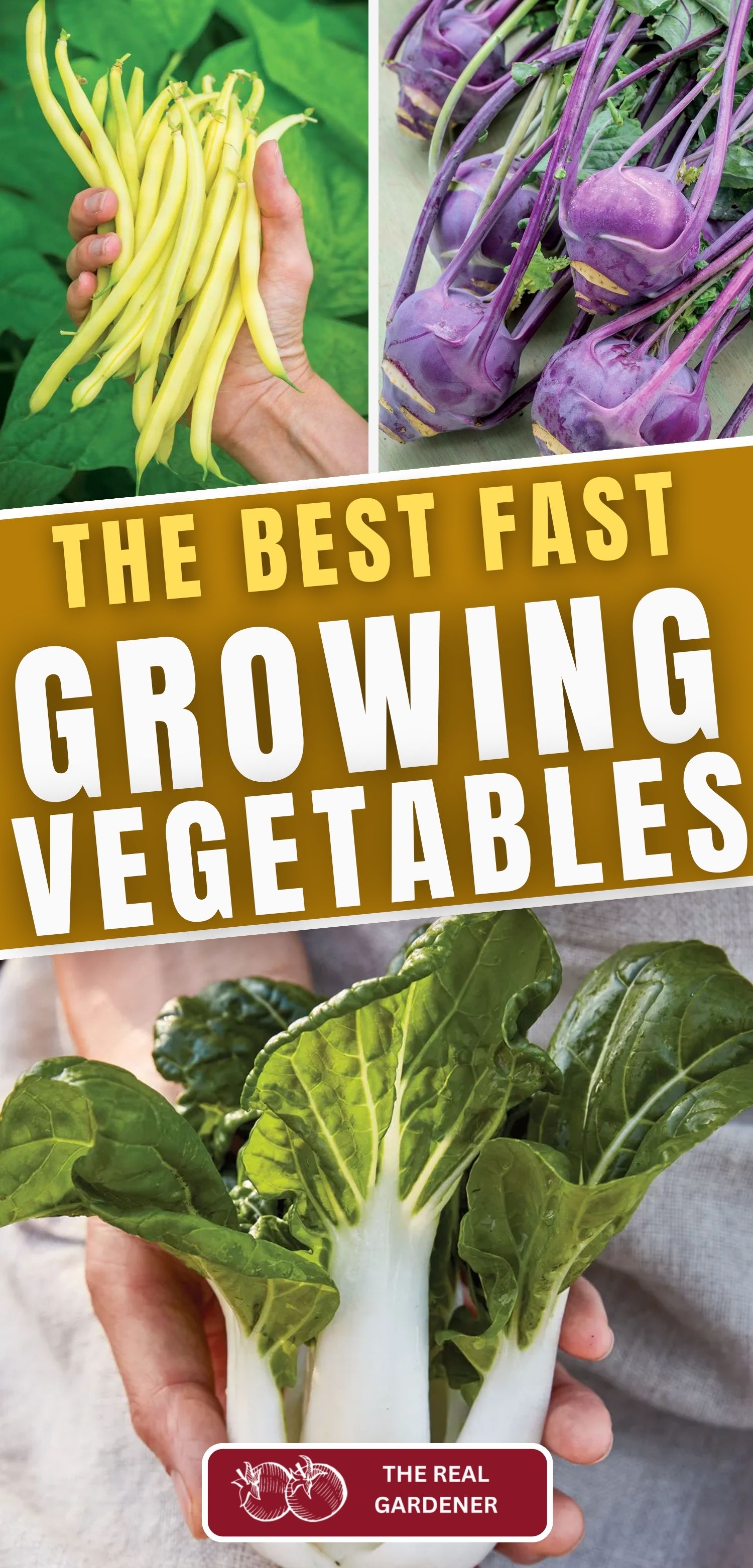
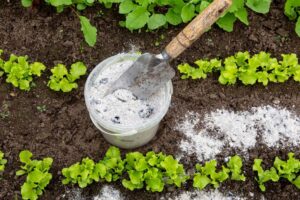
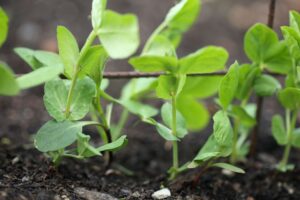
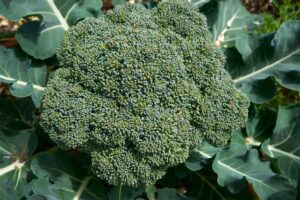
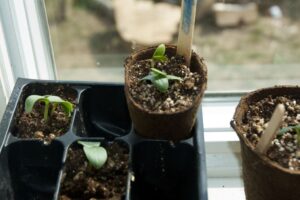
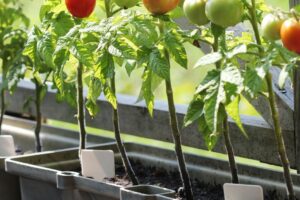

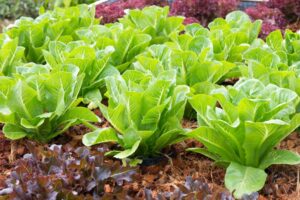
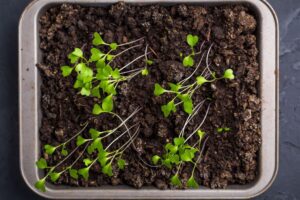
Thank you for this info! I live in a much hotter climate where we can pretty much grow all year long, but some fast growing veggies are nice to put in for an earlier harvest!
It would be great to live in Arizona. Actually, considering the extreme heat, I think I’m fine here in Ontario! 😄
What a helpful post. I’ll pin it for future reference. Saw it at SSPS#326. My shares are #96 through 99. Enjoy and Happy Labor Day. Nancy Andres @ Colors 4 Health.
Thanks for Stopping by Nancy! I will check out your entries.